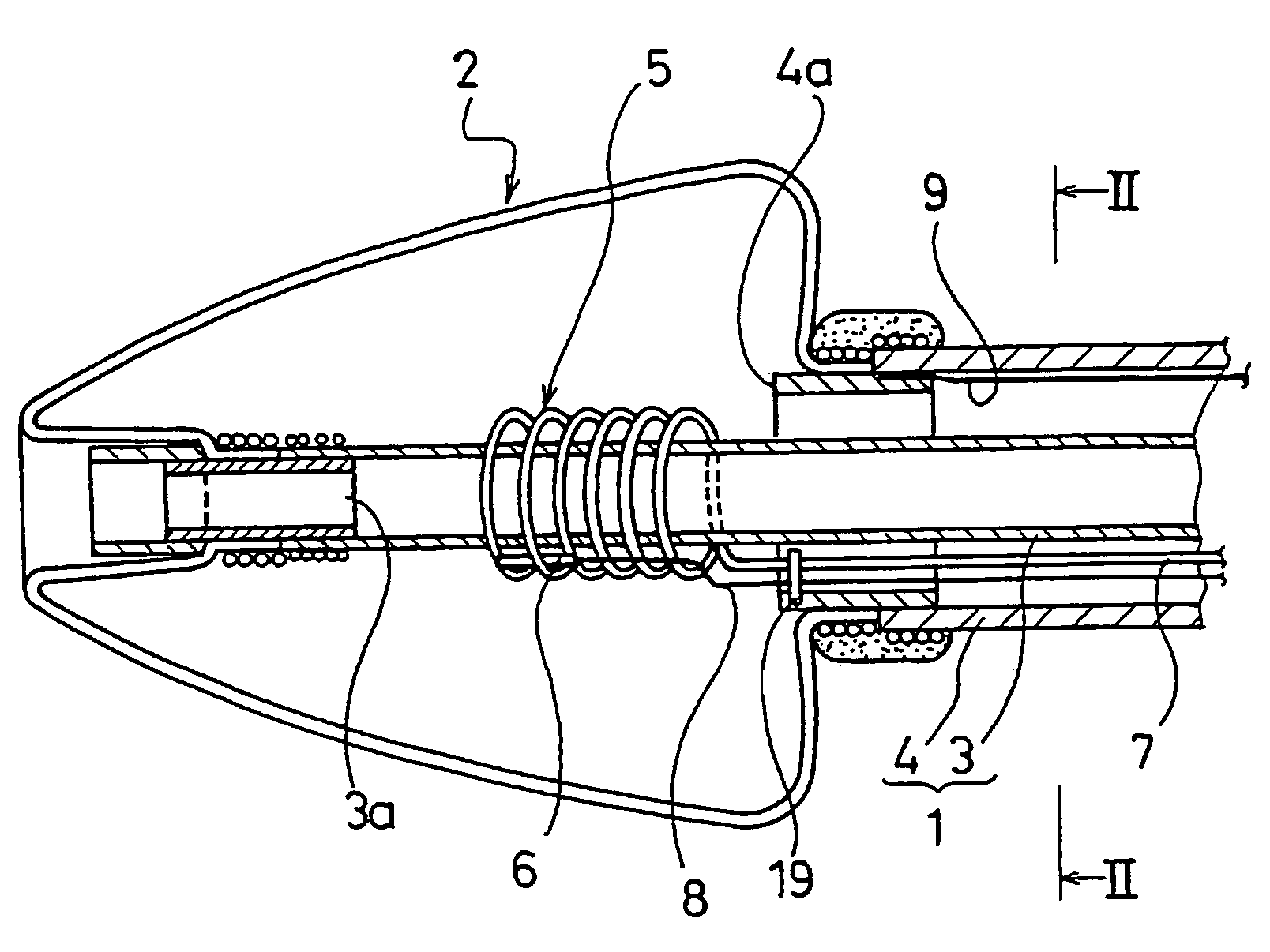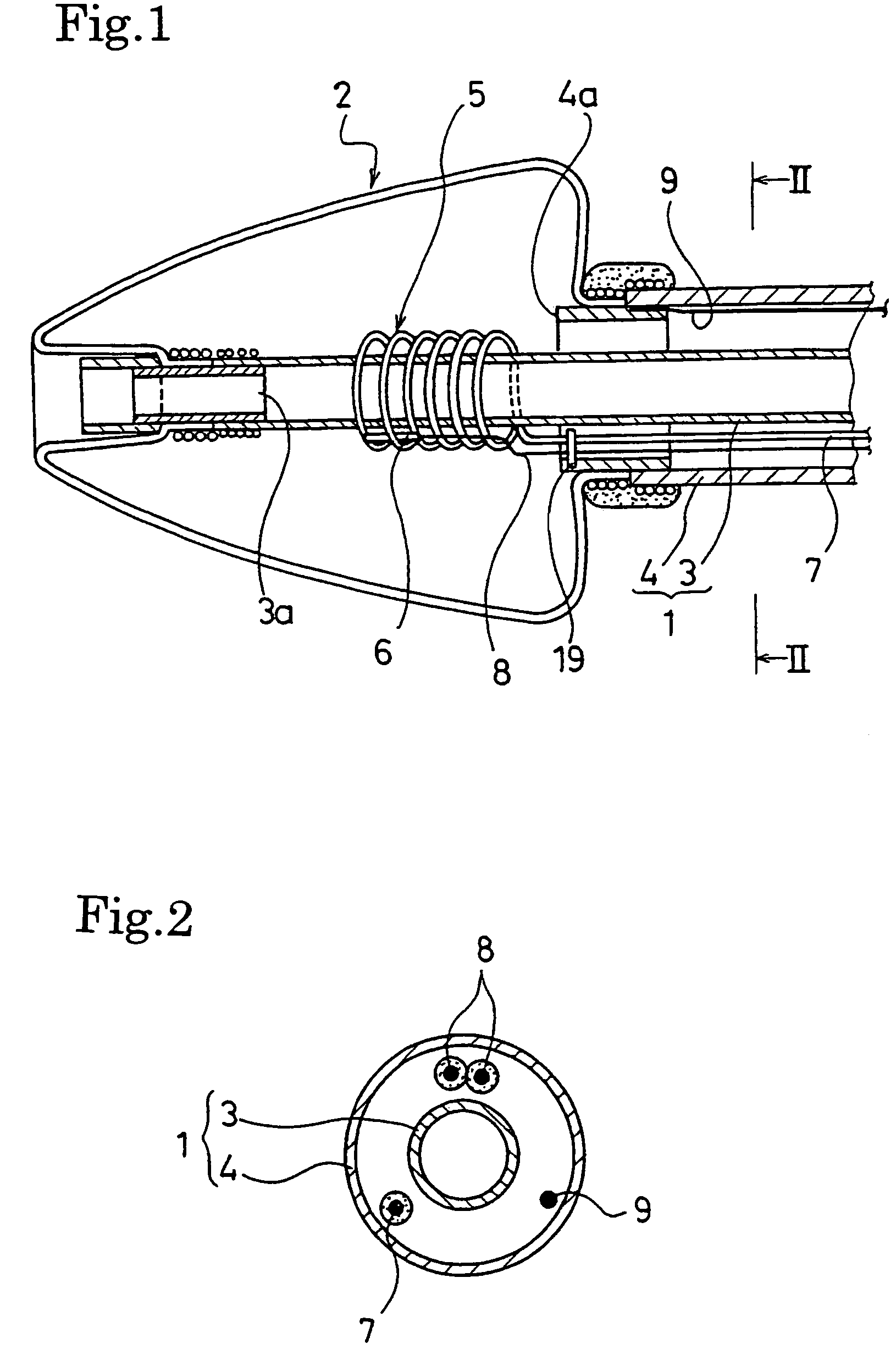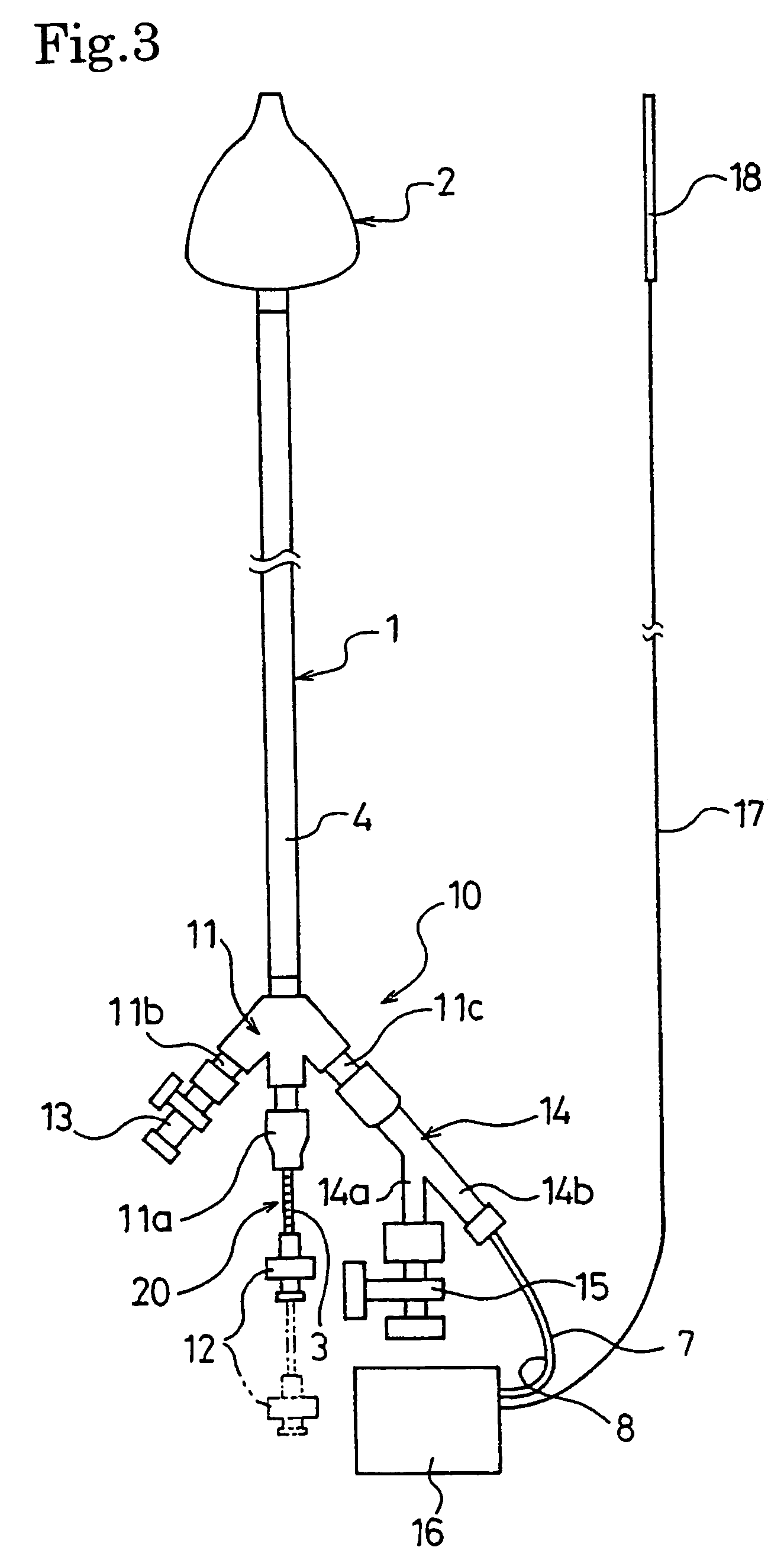Catheter for treating of arrhythmia
a catheter and arrhythmia technology, applied in the field of catheters for treating arrhythmias, can solve the problems of destroying the body parts such as the heart and the vessel, ablating the entire environment, and affecting the treatment effect,
- Summary
- Abstract
- Description
- Claims
- Application Information
AI Technical Summary
Benefits of technology
Problems solved by technology
Method used
Image
Examples
Embodiment Construction
[0039]In order to facilitate understanding of the present invention, the embodiments thereof will hereinafter be described.
[0040]FIG. 1 through FIG. 3 show a series of catheters for use in the treating of arrhythmia in accordance with the present invention.
[0041]In the catheters from these figures, a balloon 2 capable of being inflated and deflated is mounted to the tip of a catheter shaft 1. The catheter shaft 1 comprises a double-cylinder structure with an inner shaft 3 and an outer shaft 4, and the inner shaft 3 is inserted in such a way that longitudinal sliding thereof with respect to the inner shaft 3 and the outer shaft 4 is possible. The inner shaft 3 and the outer shaft 4 are both made from a radiopaque resin material and with antithrombogenic properties, and metal pipes 3a, 4a with radiation shielding properties are connected to the tips of each shaft 3, 4. The balloon 2 is fixed at the front end thereof to the metal pipe 3aand at the rear end thereof to the metal pipe 4a,...
PUM
 Login to View More
Login to View More Abstract
Description
Claims
Application Information
 Login to View More
Login to View More - R&D
- Intellectual Property
- Life Sciences
- Materials
- Tech Scout
- Unparalleled Data Quality
- Higher Quality Content
- 60% Fewer Hallucinations
Browse by: Latest US Patents, China's latest patents, Technical Efficacy Thesaurus, Application Domain, Technology Topic, Popular Technical Reports.
© 2025 PatSnap. All rights reserved.Legal|Privacy policy|Modern Slavery Act Transparency Statement|Sitemap|About US| Contact US: help@patsnap.com



